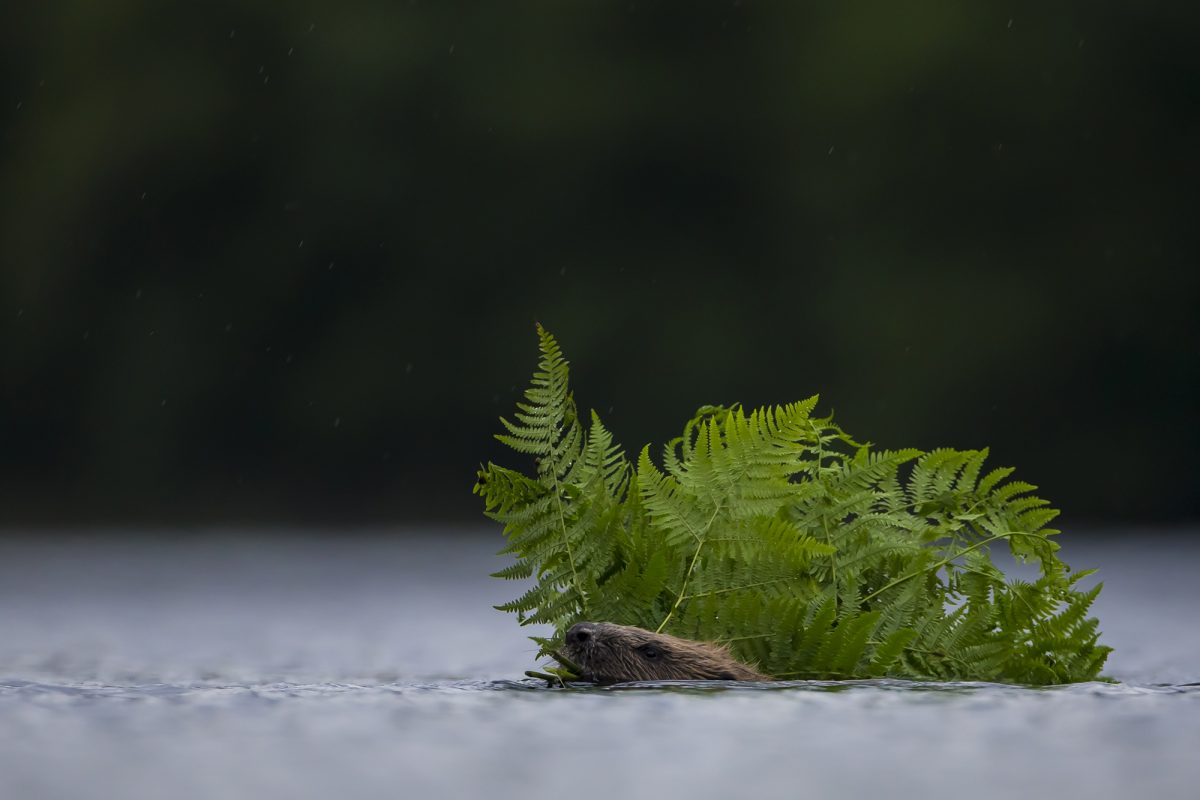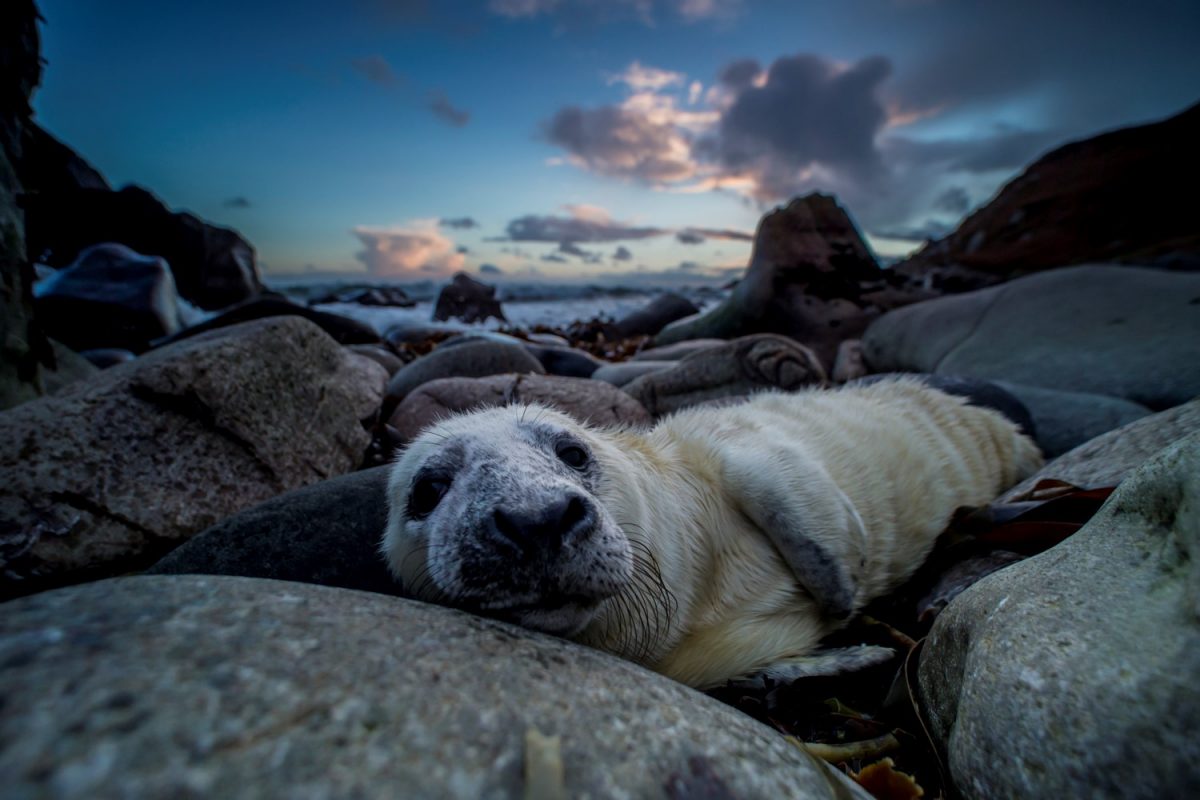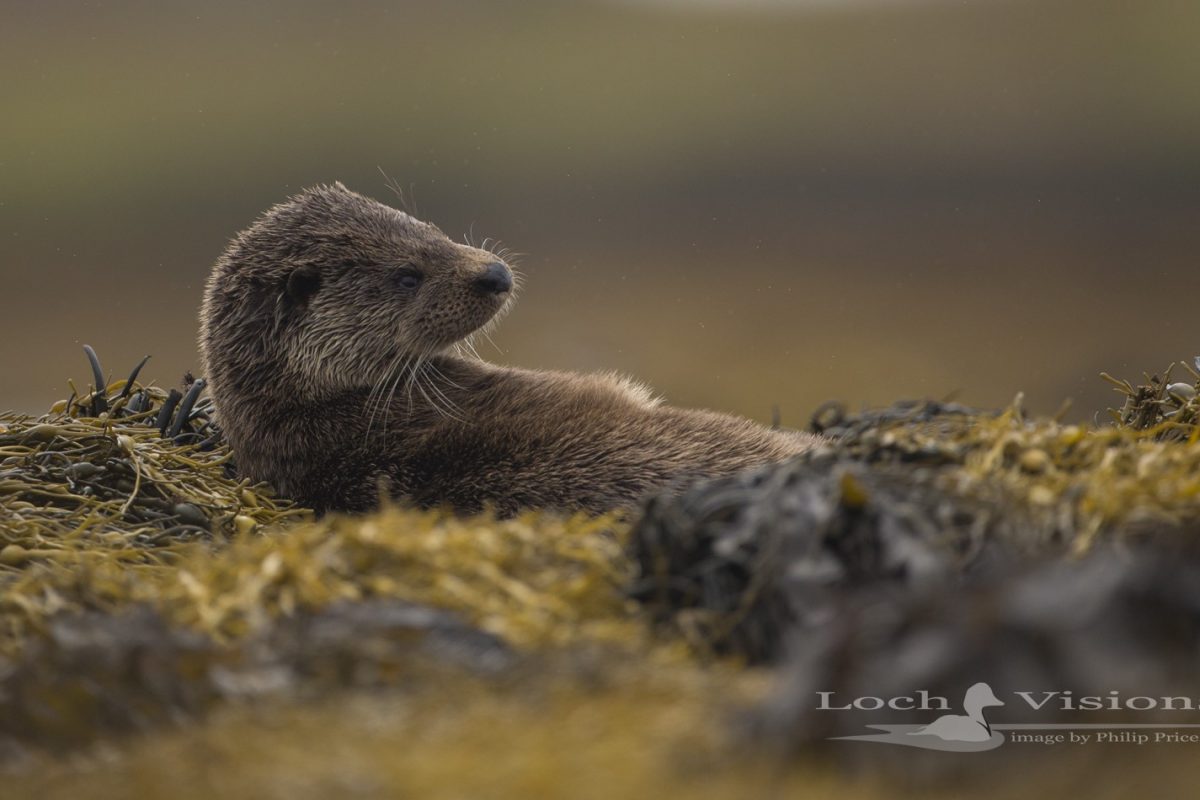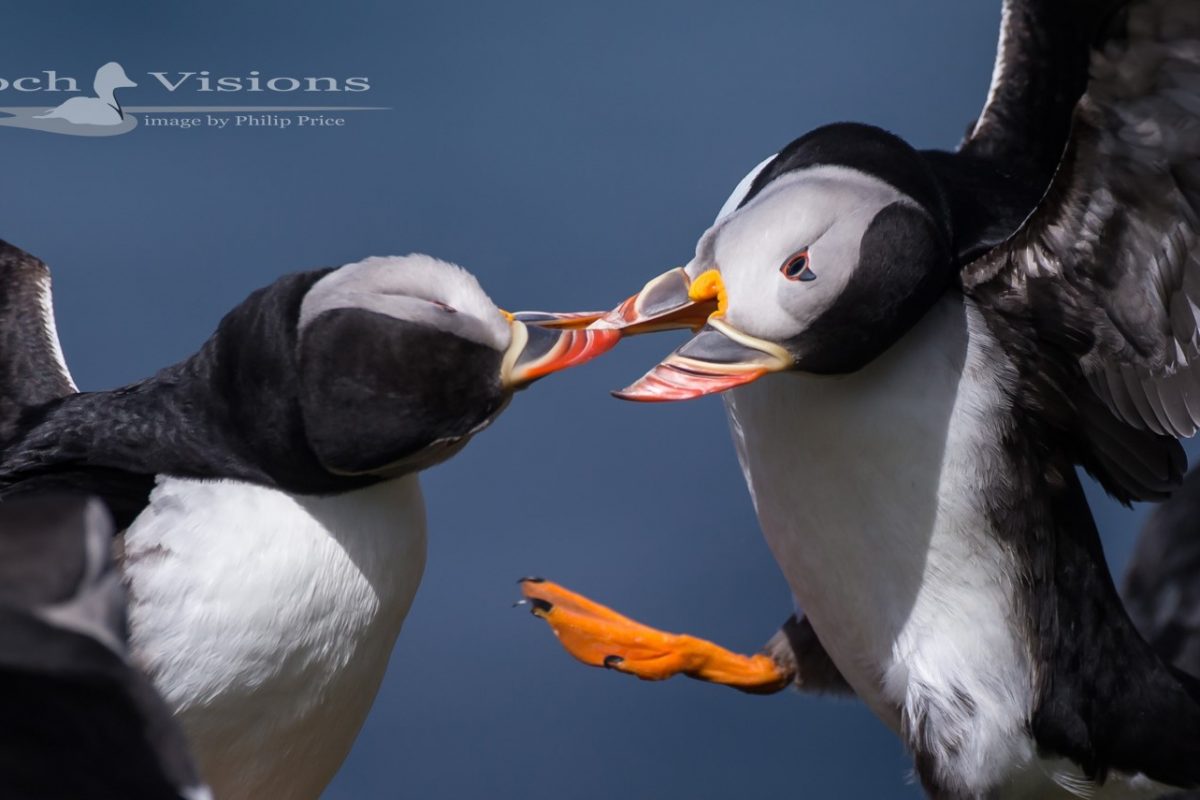Can you tell us the story behind your photo?
I am a photographer for Scotland: The Big Picture and beavers are one of our key species to highlight the benefits of having a wilder Scotland. As a result, I spend a long time with this animal trying to showcase the huge benefits they can have to our ecology and society. People perceive bracken as a nuisance, to find out that beavers eat it, means there is another wonderful reason to make space for beavers in our landscape.

How did you go about getting that shot?
I was running one of my Beaver photography workshops when I saw an island float down from the far end of the loch. It was luminous green and was moving quicker than the current, eventually, the penny dropped that the floating island was, in fact, a beaver carrying an enormous mouthful of bracken. The client and I then ran to a safe position at the loch’s edge in line with where it was heading, got down to eye level to the water and waited. The Beaver eventually swam past enabling a handful of shots to be taken with this being the best. We were both elated and knackered as beavers swim much quicker than they look capable of.
How long did you have to wait for this shot?
The evening workshop was around four hours and this happened right at the end, but I have been waiting to get a shot like this for Scotland: The Big Picture for two years so a fair amount of time in the field.
Did you use any particular equipment or software?
Canon 6d and 500mm f4 lens, Adobe Lightroom to process raw file.

What are your favourite scenes, species, or motivations behind your photographs?
All the motivation now is to see Scotlands’ wildlife and ecology improve, it is the only reason I do what I do. Through the project Scotland: The Big Picture we aim to use our images to argue the case for a much wilder and richer use of our landscape. To do away with unhealthy mono-cultures and towards a much richer and diverse spread of species and habitats. As a result, my favourite locations and animals are linked to this ideal, sea eagles soaring over a great coastal oak forest and Otters swimming below the limbs of an ancient temperate rainforest. I tend to run all my workshops in these mind-blowing locations and hope to help create more.

What are the difficulties of wildlife and nature photography that you face?
The huge damage caused to and disregard of the natural world by our decision-makers and some businesses, this is by far the biggest challenge to taking great nature shots in the UK.
What would you like people to think about when they see your work?
How exciting and amazing the natural world is and how much fun it can be and hence we need more of it.
How long have you been a photographer and how did you get started?
12 years ago. I started in a studio photographing people then quickly moved into wildlife 11 years ago, which is when I started my guiding and photography workshop business Loch Visions.

What would you advise someone wanting to start taking photos of wildlife or nature in their local environment?
Local is the key. Start with a project of spiders in your garden or squirrels at the park. Understand your subject, spend time and you will reap the rewards.
What projects are you working on now or have coming up?
Sea Eagles for Scotland: The Big Picture is my main freelance job at the moment. My brief is to showcase the huge benefits these animals are bringing to rural communities and also show the solutions to some of the perceived difficulties.
I am also in the middle of setting up a wildlife photography ‘park’ idea for all my workshops, set in temperate rainforest on the west coast of Scotland which is very exciting.



